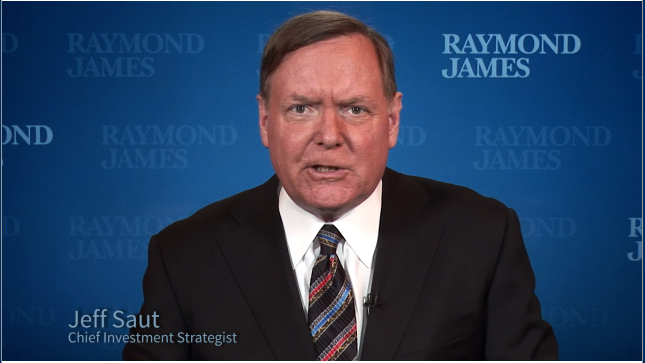July Gleanings
A Monthly Chart Presentation and Discussion Pulling Together the Disciplines of Economics, Fundamentals, Technical Analysis, and Quantitative Analysis Published by Raymond James & Associates
“In our recent travels we keep getting asked, “How can the economy and stock market get any better?” That brought back memories of a scene from the 1997 movie “As Good as It Gets” starring Jack Nicholson. The scene is where Nicholson’s character (Melvin Udall) is walking out of his psychiatrist’s office, he turns to the other patients in the waiting room and says, “What if this is as good as it gets?” It is a reasonable question given the improvement in the economy and a 300%+ move in the S&P 500 (see page 3). Yet, the history of secular bull markets is that they typically last 14+ years and tend to compound at 15% per year. Most investor believe the secular bull market began in March 2009, but the majority of stocks bottomed on October 10, 2008. On that date, 92.6% of traded stocks made new annual lows. Our notes on the equity markets go back to the 1960’s and we have never seen such a reading before. It is a seven or eight standard deviation event, meaning it is not supposed to occur in your lifetime. So, in our opinion, the secular bull started in October 2008. We can even make a cogent argument that the bull didn’t begin until the major averages broke out of the 2000–2013 trading range in April of 2013. Indeed,
nobody measures the 1982–2000 secular bull market from the nominal price low of December 1974 (March 2009 was this market’s nominal price low). They measure it from when the major averages broke out of the 1966–1982 trading range in August 1982, but we
digress. So, most use March 2009 as the starting point; okay, fair enough. Using that as a starting point implies this bull should last at least until 2023 (14 years). Some pundits actually believe this will be the greatest bull market of all time. In our lifetime, 1982–2000 was the longest secular bull we have experienced. If, by chance, this one equates to that one, it suggests a target date of 2027 (18 years), yet few individual investors believe it.
Speaking of big bases that stocks break out of, it has been proven that the longer the base
(1966–1982 or 2000–2013), the greater the subsequent bull market. To this point, the Value Line Geometric Index definitively broke out above a 19-year base in September 2017. If one uses that as a starting point, well you can run the numbers. It has also been said that an investor will experience three secular bull markets in their lifetime. For the first one, you will not have much money to do much with it. In the third bull market, you will be too old to take enough risk to really capitalize on it. Therefore, you better take full advantage of the second bull market in your lifetime. For us, this is the second secular bull market of our lifetime and we are investing accordingly.”



